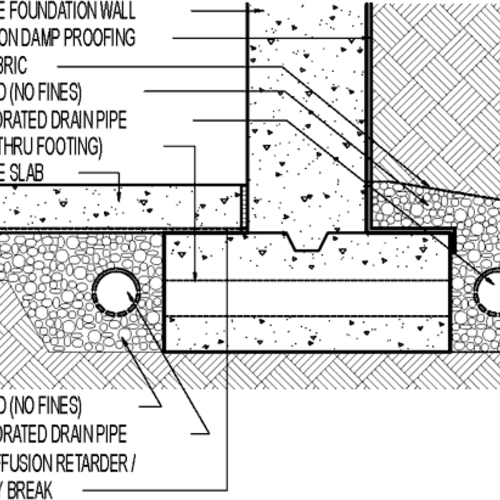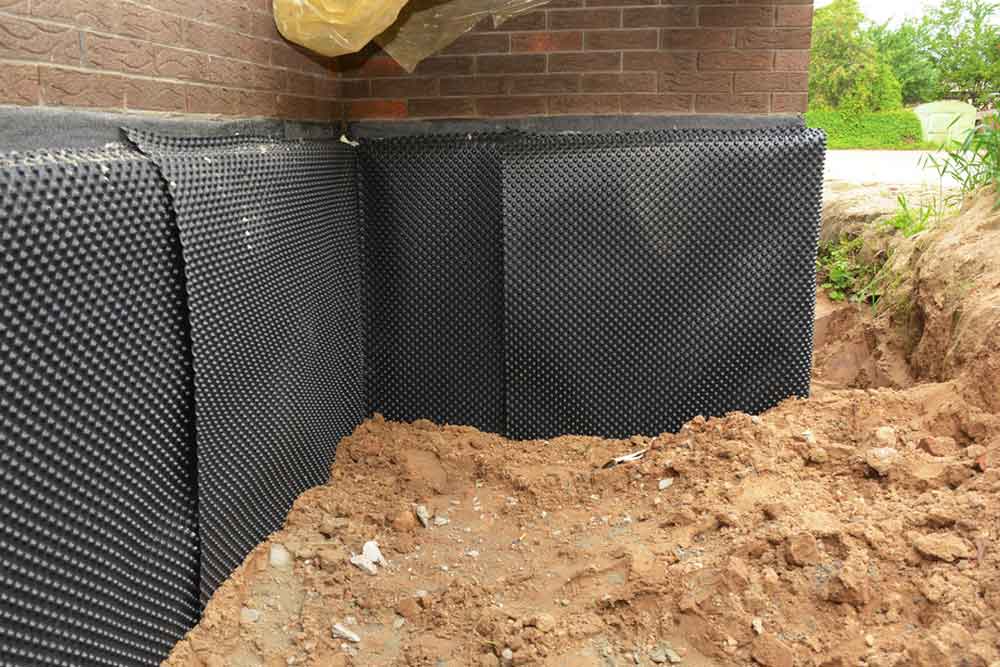What makes professional damp proofing newcastle essential for home health
What makes professional damp proofing newcastle essential for home health
Blog Article
Discovering the Various Techniques and Solutions for Effective Damp Proofing
Moisture in buildings positions considerable obstacles to both architectural honesty and interior air quality. Various methods and options have actually arised to battle this prevalent concern. From conventional damp-proof membrane layers to ingenious chemical therapies, each technique provides distinct benefits. Comprehending these options is necessary for reliable dampness control. However, selecting the best solution depends on particular building conditions and needs, prompting further exploration into the most effective moist proofing techniques offered.
Understanding the Reasons For Wetness
Although moisture can develop from different sources, comprehending these causes is essential for reliable removal. Frequently, dampness originates from 3 primary sources: climbing moist, permeating damp, and condensation. Climbing wet takes place when groundwater travels upwards via permeable materials, such as brick or rock, commonly due to a lack of a reliable barrier (damp specialist newcastle). Penetrating wet is normally triggered by external aspects, including roofing leakages, defective seamless gutters, or damaged wall surfaces, permitting water to infiltrate a residential or commercial property. Condensation, on the various other hand, arises from excess moisture in the air, usually worsened by poor air flow and temperature distinctions, bring about water droplets basing on surface areas. Identifying these underlying problems is necessary, as each kind of moisture needs a tailored technique for removal. Proper evaluation aids in figuring out the most efficient services, ultimately securing the structural integrity of a structure and boosting interior air quality
Standard Damp-Proof Membrane Layers

Chemical Damp-Proofing Solutions
Chemical damp-proofing solutions offer an innovative approach to avoid moisture intrusion in structures. These methods commonly include the application of fluid chemicals that pass through stonework and create an obstacle versus climbing moist. Frequently utilized chemicals include silanes, siloxanes, and various other water-repellent representatives that respond with surface products to develop a hydrophobic layer.The application process usually requires exploration openings into the wall surfaces, infusing the chemical service, and enabling it to heal. This technique is especially useful for older frameworks where conventional damp-proof membrane layers may be unwise. In addition, chemical damp-proofing can be much less disruptive and a lot more affordable than comprehensive restoration projects.While efficient, these options rely on appropriate application and environmental problems for peak efficiency. Routine maintenance and tracking are vital to assure the longevity of the damp-proofing treatment. In general, chemical damp-proofing stands for a versatile choice for guarding buildings against moisture-related damages
Cavity Wall Building And Construction Techniques
Tooth cavity wall surface construction methods offer many advantages, especially in moisture control and power effectiveness. By including an air void in between two layers of masonry, these walls effectively minimize water ingress while boosting insulation. This mix not just protects structures from moisture yet also adds to decreased power consumption.
Advantages of Cavity Walls
When taking into consideration reliable damp proofing methods, the advantages of cavity walls stick out plainly. Dental caries wall surfaces contain two separate layers, producing an air space that properly reduces moisture penetration. This style lessens the danger of moisture, as the outer wall surface works as an obstacle versus rainfall and water ingress. Furthermore, tooth cavity walls enhance thermal insulation, which adds to energy efficiency by reducing heat loss. They additionally supply audio insulation, assisting to create a quieter interior atmosphere. The air gap allows for ventilation, which assists in wetness control and minimizes the possibility of mold and mildew development. These advantages not just improve the total convenience of a building yet also add to its durability and structural integrity.
Moisture Control Strategies
Efficient dampness control techniques are crucial in dental caries wall building to guarantee lasting protection versus wetness. One primary approach involves the unification of weep holes, which assist in water drain from the cavity, preventing build-up. In addition, the use of breathable membranes can aid take care of moisture levels while permitting entraped vapor to leave. Appropriate positioning of insulation is also important, as it should not obstruct drain courses. Additionally, guaranteeing that the outer fallen leaves of the tooth cavity wall surface are created with waterproof materials improves total resilience. Normal upkeep checks are essential to identify any blockages or damage early, safeguarding the structure's stability. Eventually, a combination of these methods creates a durable defense against moisture invasion in tooth cavity walls.
Insulation and Energy Effectiveness
Insulation plays a crucial function in boosting power performance within dental caries wall surface building and construction. By including shielding products, these wall surfaces produce a thermal barrier that reduces heat loss and reduces energy consumption. Efficient insulation not just assists preserve a steady indoor temperature but additionally mitigates the risk of wetness, as it protects against condensation within the wall surface dental caries. Different methods, such as the use of rigid foam boards or mineral wool, can be used to accomplish ideal insulation efficiency. In addition, proper installation is necessary to guarantee that voids and gaps are decreased, which can or else jeopardize energy performance. Ultimately, a well-insulated dental caries wall adds greatly to total sustainability and reduces cooling and heating prices for property owners.
Exterior Damp Proofing Methods
External damp proofing approaches are vital for securing frameworks from moisture infiltration. Two efficient strategies include the application of water-proof membrane layers and the setup of French drains pipes. These options assist minimize water accumulation and maintain the honesty of buildings.
Waterproof Membrane Layer Application
While various approaches exist for avoiding wetness ingress, the application of water resistant membrane layers remains an extremely efficient outside damp proofing technique. These membranes are usually made from materials such as polyethylene, rubber, or customized asphalt, giving a robust barrier against water infiltration. The installation procedure includes using the membrane to the external surface areas of walls or foundations, making sure total protection to stop leaks. Correct adhesion and securing at joints are important to making best use of effectiveness. Water resistant membrane layers can be used in numerous kinds, consisting of fluid coatings and sheet membrane layers, permitting for flexibility based on the specific requirements of the structure. This method not just secures structures from moisture however likewise enhances their longevity and structural honesty.
French Drainpipe Installation
One effective method for managing groundwater and preventing moisture accumulation around a structure's foundation is the setup of a French drainpipe. This drain system consists of a trench loaded with gravel and a perforated pipe that redirects surface area water far from the foundation. Proper installation calls for cautious planning, ensuring that the drainpipe inclines far from the framework to assist in ideal water flow. In addition, the location of the drainpipe is important; it should be placed in areas prone to pooling or excess moisture. Routine maintenance, including cleaning debris from the crushed rock and making certain the pipeline stays unhampered, is crucial for lasting effectiveness. Eventually, a well-installed French drainpipe can substantially lower the risk of water-related issues in cellars and foundations.
Inside Waterproofing Techniques
Inside waterproofing methods are vital for protecting a structure's interior from moisture infiltration and possible water damage. These techniques generally entail the application of specific products and techniques created to create a wetness obstacle within the framework. One common strategy is using water resistant layers or sealants on walls and floorings, which protect against moisture from permeating surfaces.Additionally, mounting interior water drainage systems, such as sump pumps, can successfully manage water build-up in basements and creep rooms. Another technique includes the usage of vapor obstacles, which are installed to prevent wetness motion from the ground right into living spaces.Moreover, dealing with any type of splits or voids in wall surfaces or foundations with appropriate sealants assures a comprehensive protection versus water breach. By implementing these interior waterproofing techniques, homeowner can significantly decrease the danger of mold and mildew development, architectural damages, and various other moisture-related concerns. Appropriate implementation of these techniques is crucial for lasting defense and structure stability.
Routine Maintenance and Assessment Practices
Normal upkeep and examination techniques are important for ensuring the long-lasting effectiveness of damp proofing remedies in any kind of building. Routine checks enable homeowner to determine early signs of moisture intrusion, such as peeling off paint, mold and mildew growth, and musty smells. These signs can indicate underlying issues that require immediate attention.Inspections need to be carried out at the very least annually, concentrating on prone locations like cellars, creep rooms, and outside wall surfaces. Throughout these analyses, home owners need to examine sealers, water drainage systems, and ventilation to confirm they operate correctly.Additionally, preserving downspouts and seamless gutters is necessary, as clogged up systems can result in water accumulation near the structure. Implementing a regular upkeep schedule, along with timely repairs, can considerably expand the lifespan of damp proofing actions and protect the architectural honesty of the building. Aggressive procedures ultimately add to the total health and security of the living setting.
Often Asked Concerns
The Length Of Time Does Damp Proofing Usually Last?
The duration of wet proofing efficiency differs, commonly lasting in between 20 to 50 years. Aspects such as application quality, environmental conditions, and upkeep practices greatly website influence the durability of the moist proofing therapy.

Can I Damp Proof My Home Myself?
The specific considered the usefulness of DIY damp proofing. With correct research study and the appropriate materials, it is feasible. They likewise recognized the value of professional assistance to assure lasting performance and prevent future problems.
What Are the Indicators of Ineffective Damp Proofing?
Indications of inadequate wet proofing include consistent stuffy odors, visible mold and mildew growth, peeling paint, moist spots on wall surfaces, and wood decay - mould removal newcastle. Homeowners must address these problems immediately to stop additional damages and health concerns
Does Damp Proofing Affect Indoor Air Top Quality?

How Much Does Expert Damp Proofing Price?
Professional moist proofing prices vary significantly, typically ranging from $1,000 to $5,000 depending upon the home's dimension, the extent of the moist problem, and picked methods. Each circumstance needs a customized assessment for accurate prices. Frequently, wetness originates from three main resources: climbing moist, permeating damp, and condensation. When considering efficient wet proofing techniques, the benefits of cavity walls stand out plainly. External damp proofing methods are vital for protecting structures from wetness infiltration. While various techniques exist for stopping wetness access, the application of water resistant membranes remains a very reliable external moist proofing strategy. Signs of ineffective wet proofing consist of persistent moldy smells, visible mold development, peeling paint, wet spots on walls, and wood degeneration.
Report this page